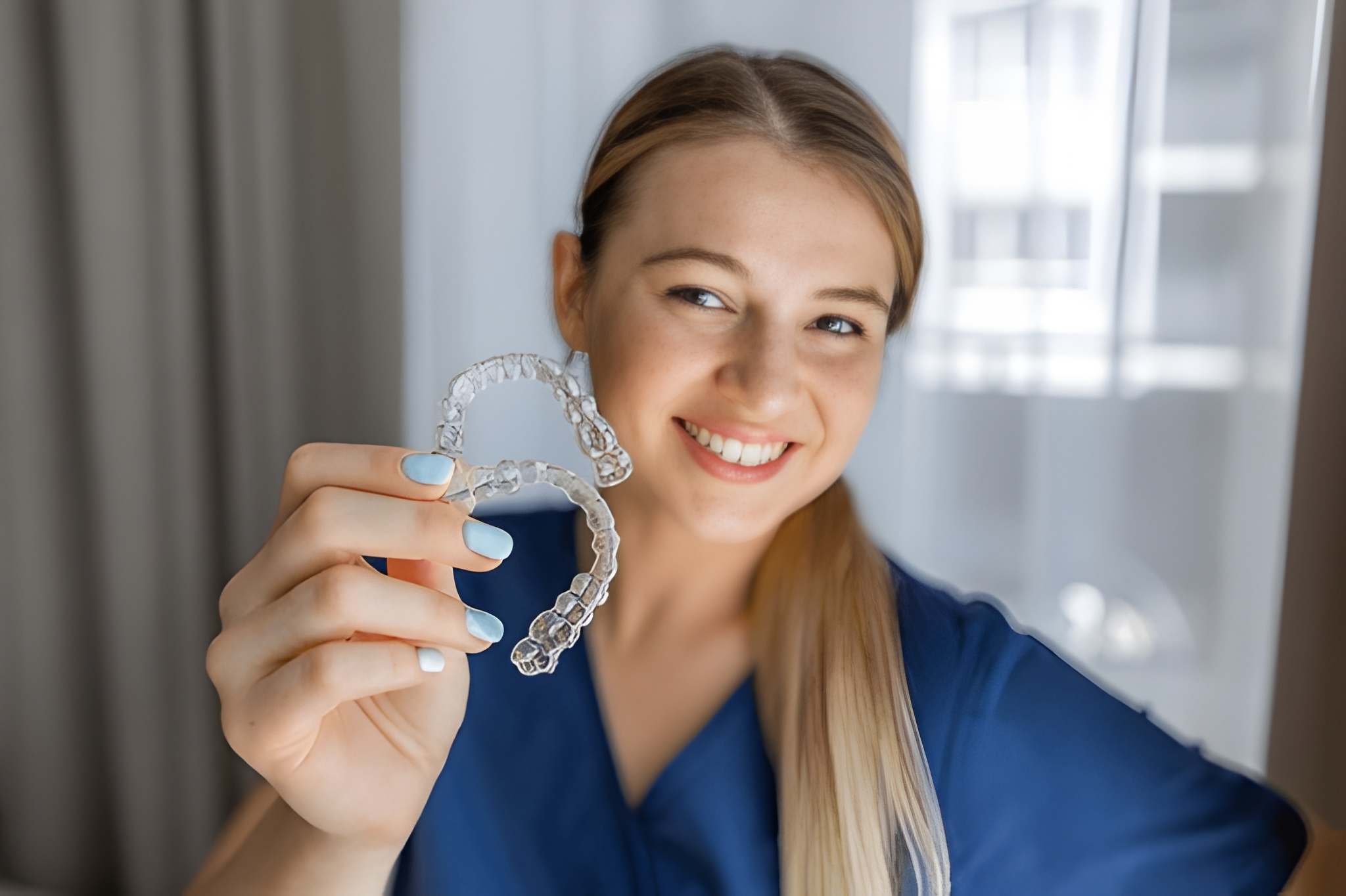Composite bonding teeth have gained popularity as a cosmetic solution for those wanting to improve the appearance of slightly misaligned teeth. Many people often ask, “Can composite bonding straighten teeth?” The answer to that depends on the severity of the misalignment. Composite bonding is ideal for minor adjustments, making it an excellent choice for those with slightly crooked teeth or small overlaps.
What is Composite Bonding?
Composite bonding teeth is a cosmetic procedure where a tooth-coloured resin is applied to the surface of the teeth. This resin can be shaped and moulded to improve the teeth’s appearance in terms of size, shape, and overall look. Unlike more invasive treatments like veneers or crowns, composite bonding requires minimal removal of the natural tooth structure. Additionally, this procedure can typically be completed in one visit, making it a convenient option for those seeking immediate results.
Can Composite Bonding Straighten Crooked Teeth?
For people with minor misalignments, composite bonding on crooked teeth can be an effective solution. The resin can be applied to specific areas of the teeth to hide the crookedness and create the appearance of straighter teeth. However, it’s crucial to understand that composite bonding teeth do not physically straighten the teeth; it only improves their appearance. For those with significant misalignment, orthodontic treatments might be required before considering bonding.
Composite Bonding on Overlapping Teeth
Composite bonding on overlapping teeth works similarly to bonding for crooked teeth. A dentist can apply the resin to the overlapping areas, giving the illusion of straighter teeth. This is especially useful for minor overlaps. In more severe cases, orthodontic treatments may be necessary before bonding is considered. One of the biggest advantages of composite bonding on overlapping teeth is that it is non-invasive, preserving the natural tooth structure, and the process is usually painless.
Benefits of Composite Bonding for Misaligned Teeth
- Quick Results: One of the primary benefits of composite bonding teeth is that it provides fast results. In just one dental visit, you can have a more aligned smile.
- Natural Appearance: The resin is color-matched to your teeth, so the bonded areas blend seamlessly with your natural smile.
- Affordable: Compared to other cosmetic dental procedures, composite bonding is a cost-effective option.
- Minimally Invasive: This procedure is gentle on the teeth, as no significant tooth structure is removed, resulting in minimal recovery time.
Limitations of Composite Bonding for Crooked or Overlapping Teeth
While composite bonding offers several benefits, there are some limitations to keep in mind:
- Durability: Composite bonding typically lasts up to 10 years, but it is not as durable as other cosmetic treatments like veneers. It can chip or stain over time.
- Maintenance: The composite resin used in bonding can stain, especially if exposed to coffee, tea, or tobacco. Regular touch-ups may be needed to maintain its appearance.
- Not Suitable for Severe Misalignment: If your teeth are significantly misaligned, orthodontic treatments like braces or aligners may be more appropriate.
Can Composite Bonding Close Gaps?
Can Composite Bonding Close Gaps?
Composite bonding is an effective and popular method for closing gaps between teeth. This procedure involves applying a tooth-colored resin material to the teeth, which can be shaped and molded to fill in spaces and create a more uniform appearance. The resin is then hardened using a special light, ensuring it bonds securely to the natural tooth structure. This process is minimally invasive, often requiring little to no removal of the natural tooth enamel, making it an attractive option for those looking for a quick and painless cosmetic improvement.
One of the significant advantages of composite bonding for closing gaps is its ability to provide immediate results. Unlike braces or other orthodontic treatments, which can take months or even years to achieve the desired outcome, composite bonding can be completed in a single visit. Additionally, the material used in composite bonding can be color-matched to the natural teeth, ensuring a seamless and natural-looking result. While the results of composite bonding are not permanent and may require touch-ups over time, it remains a cost-effective and efficient solution for individuals seeking to enhance their smile without the need for more extensive procedures.
Composite Bonding in Scotland
If you’re considering composite bonding teeth in Scotland, many reputable clinics are available. Whether you are in Edinburgh, Glasgow, or elsewhere, it’s essential to find a skilled dentist with experience in composite bonding. Composite bonding teeth in Glasgow are particularly popular, with many clinics offering customized services to meet individual needs. It’s important to research and read reviews before choosing a clinic to ensure you’re selecting the best option for your treatment.
What to Expect During the Composite Bonding Process
The composite bonding process is straightforward and typically takes around 30 minutes to an hour per tooth. Here’s what you can expect:
- Consultation: Your dentist will evaluate your teeth to determine if you’re a suitable candidate for composite bonding teeth.
- Preparation: The tooth surface is slightly roughened, and a conditioning liquid is applied to help the resin adhere.
- Application: The dentist will apply the resin to the tooth, shaping it to create the desired appearance.
- Curing: A special light is used to harden the resin.
- Polishing: Once the resin is set, the dentist will polish the tooth to match the sheen of your natural teeth.
The composite bonding process is relatively simple and can typically be completed within 30 minutes to an hour per tooth. It begins with a consultation, during which your dentist will assess your teeth to determine if composite bonding is the right treatment for you. This evaluation often involves checking for issues like decay or gum disease, as these must be addressed before the bonding procedure. Once you are deemed a suitable candidate, the dentist will prepare the tooth by gently roughening its surface. This step helps the resin adhere more effectively to the tooth. A conditioning liquid is then applied, further enhancing the bond between the tooth and the composite material.
After the preparation, the dentist will apply the composite resin to the tooth. The resin is carefully shaped and molded to achieve the desired appearance, whether that involves filling gaps, reshaping the tooth, or repairing damage. Once the resin is in place, a special curing light is used to harden the material. This step only takes a few minutes but ensures that the bond is strong and durable. Finally, the dentist will polish the bonded tooth to ensure it matches the natural sheen of your other teeth, leaving you with a smooth and natural-looking finish. The result is a quick and non-invasive cosmetic enhancement that can dramatically improve your smile.
Maintaining Your Composite Bonding
Proper care is essential to prolong the life of your composite bonding teeth. Here are some tips:
- Avoid staining foods and drinks: Limit your intake of coffee, tea, red wine, and other staining substances.
- Good oral hygiene: Brush and floss regularly to maintain your bonded teeth.
- Regular dental check-ups: Visit your dentist for routine cleanings and check-ups to ensure your bonded teeth stay in good condition.
- Avoid biting hard objects: Refrain from chewing on ice, pens, or other hard objects that could chip the resin.
Is Composite Bonding Right for You?
If you’re self-conscious about your crooked teeth or have minor overlaps, composite bonding teeth might be the solution for you. It’s a quick, affordable, and minimally invasive procedure that can significantly enhance the appearance of your smile. However, if your teeth are more severely misaligned, you may need to consider orthodontic treatments before bonding.
Consult with a qualified dentist in Scotland, whether you’re in Edinburgh, Glasgow, or another city, to discuss your options. They can assess your teeth and recommend the best course of action to achieve your desired smile.
Conclusion
Composite bonding teeth are an excellent cosmetic solution for those looking to enhance the appearance of crooked or overlapping teeth. While it can’t physically straighten teeth, it can create the illusion of a more aligned smile. If you’re considering composite bonding on crooked teeth, composite bonding on overlapping teeth, or composite bonding teeth Scotland, it’s essential to consult with an experienced dentist to determine if this procedure is right for you.
For those in Glasgow, composite bonding teeth are a popular and effective option. Whether you’re looking to close gaps, improve your smile’s appearance, or correct minor misalignments, composite bonding could be the solution you need.





